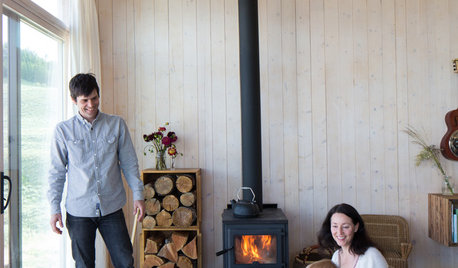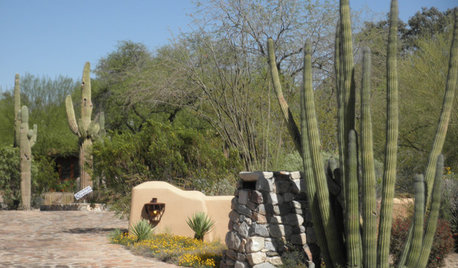How do I prepare for temps below on near the bottom of my zone?
subk3
10 years ago
Related Stories

LIFEHow to Prepare for and Live With a Power Outage
When electricity loss puts food, water and heat in jeopardy, don't be in the dark about how to stay as safe and comfortable as possible
Full Story
MOST POPULARKitchen Evolution: Work Zones Replace the Triangle
Want maximum efficiency in your kitchen? Consider forgoing the old-fashioned triangle in favor of task-specific zones
Full Story
HEALTHY HOME6 Tips From a Nearly Zero-Waste Home
Lower your trash output and increase your quality of life with these ideas from a mom who did it to the max
Full Story
DECORATING GUIDES10 Easy Fixes for That Nearly Perfect House You Want to Buy
Find out the common flaws that shouldn’t be deal-breakers — and a few that should give you pause
Full Story
HOUZZ TOURSHouzz Tour: Family Builds Off the Grid Near the Cascade Mountains
Homeowners carefully construct a weekend home on 20 acres in remote northeast Washington
Full Story
KITCHEN DESIGNStash It All: Know the 3 Zones of Kitchen Storage
Organize storage space around your kitchen’s main activities for easier cooking and flow
Full Story
KITCHEN WORKBOOKNew Ways to Plan Your Kitchen’s Work Zones
The classic work triangle of range, fridge and sink is the best layout for kitchens, right? Not necessarily
Full Story
SOUTHWEST GARDENINGUnderstanding the American Southwest's Three Main Climate Zones
If you live in one of the arid or semiarid regions of the U.S. Southwest, this gardening zone guide is for you
Full Story
THE HARDWORKING HOMEA New Drop Zone Keeps the Clutter at Bay
The Hardworking Home: A clever wall-mounted station for keys, phones and more helps a family stay organized
Full Story
KIDS’ SPACES5 Ideas for a Great Home Learning Zone
Get your child off to a good start this school year with homework areas and strategies that reduce the frenzy
Full Story









dublinbay z6 (KS)
nippstress - zone 5 Nebraska
Related Professionals
Kapaa Landscape Architects & Landscape Designers · Arlington Landscape Contractors · Glendale Heights Landscape Contractors · Hawaii Landscape Contractors · Medford Landscape Contractors · Mission Bend Landscape Contractors · Mission Viejo Landscape Contractors · Old Saybrook Landscape Contractors · West Orange Landscape Contractors · Ansonia Landscape Contractors · Rocklin Swimming Pool Builders · Rosemont Siding & Exteriors · Annapolis Siding & Exteriors · Massapequa Siding & Exteriors · San Bernardino Siding & Exteriorssubk3Original Author
seil zone 6b MI
pat_bamaz7
nippstress - zone 5 Nebraska
User
Poorbutroserich Susan Nashville
Embothrium